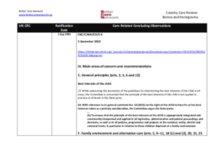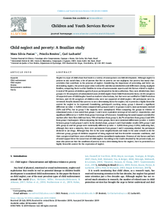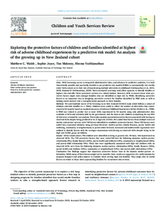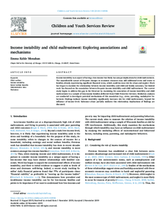Displaying 231 - 240 of 1070
This country care review includes the care-related Concluding Observations adopted by the Committee on the Rights of Persons with Disabilities and the Committee on the Rights of the Child.
The objective of this article is to provide evidence of the positive impact of the CRC on the right to a remedy for child victims of violence in selected African states, while highlighting existing gaps.
The following article reports upon recent research, which explored the perceptions of professionals of the issues that affect the sexual and criminal exploitation of children in care, along with a discussion of the effectiveness of current responses to these issues and the challenges that professionals face.
Drawing on qualitative research undertaken with adolescents with disabilities from refugee and host communities in Jordan and the State of Palestine, this article critically interrogates the framing of child neglect, which to date has situated the state as a protector rather than a perpetrator, the narrow understanding of adolescent needs and the responsibility of international actors for ensuring that the full range of human rights of adolescents with disabilities is supported.
Considering the importance of preventing and better understanding neglect, the present paper aims to describe and discuss similarities and differences among negligent families, comparing them to other families in terms of socioeconomic aspects and risk factors related to neglect.
Exposure to childhood victimization and adversity (CVA) is pervasive for child welfare (CW) involved youth. However, most research with CW samples has focused on types of maltreatment and fails to recognize the additive influence of exposure to CVA beyond maltreatment. For this study, a subsample aged 8 to 17 (n = 1,887) was drawn from the National Survey of Child and Adolescent Well-Being (NSCAW) II.
This article proposes a three-step model for the process of case file keeping, including aspects on the level of information gathering, processing, and presentation.
The aim of this study was to identify what protective factors might exist amongst families who are identified as high risk by predictive risk models (PRMs).
For this study, a sample of youth in foster care was used to provide a new examination of the relation between child maltreatment exposure and internalizing symptoms, to test the possible moderating effects of both appraisals and spirituality, and examine differences between children and adolescents.
The current study begins to address a gap in the literature by examining the association of income instability and child maltreatment in a sample of low-income families deflected from Child Protective Services.





